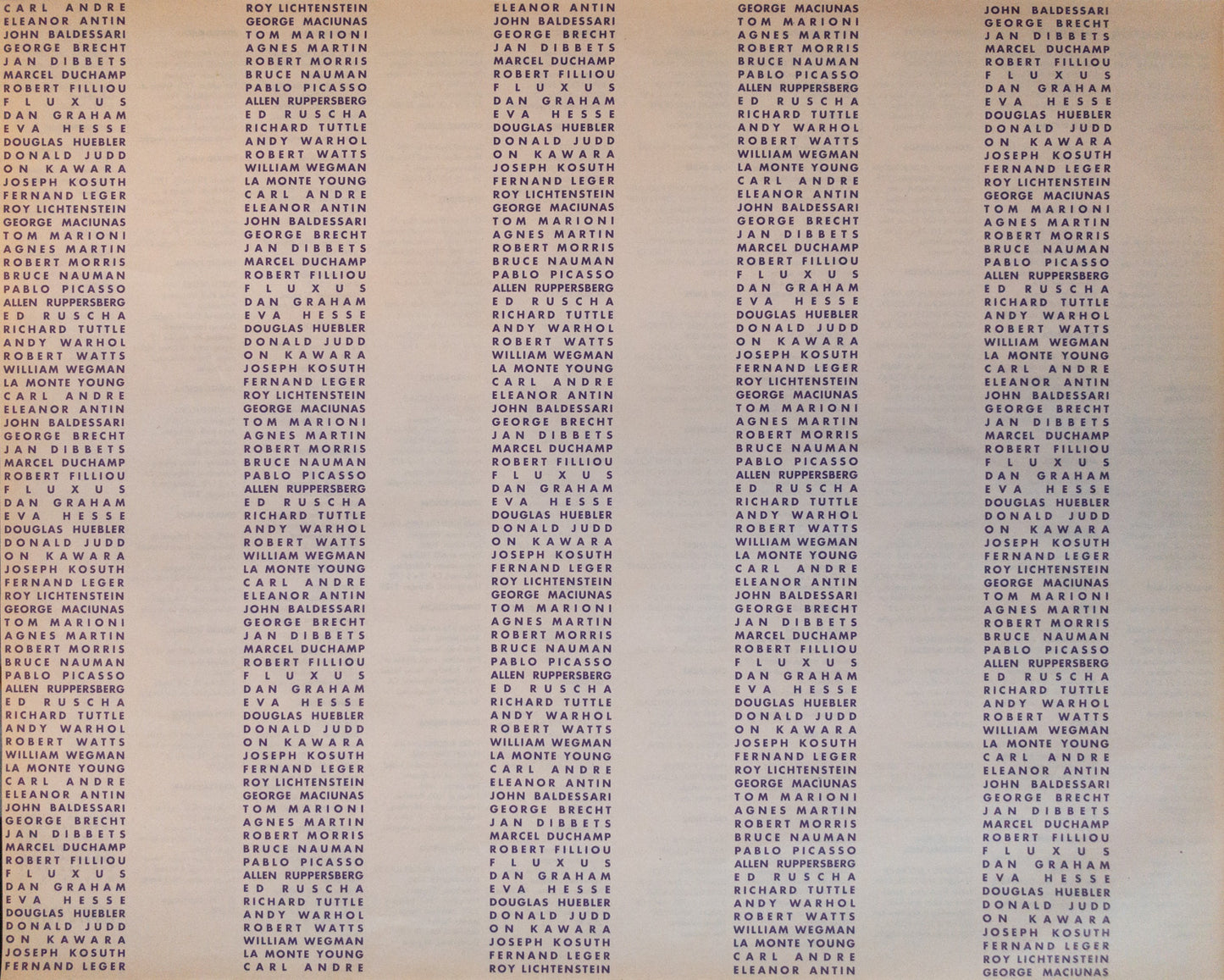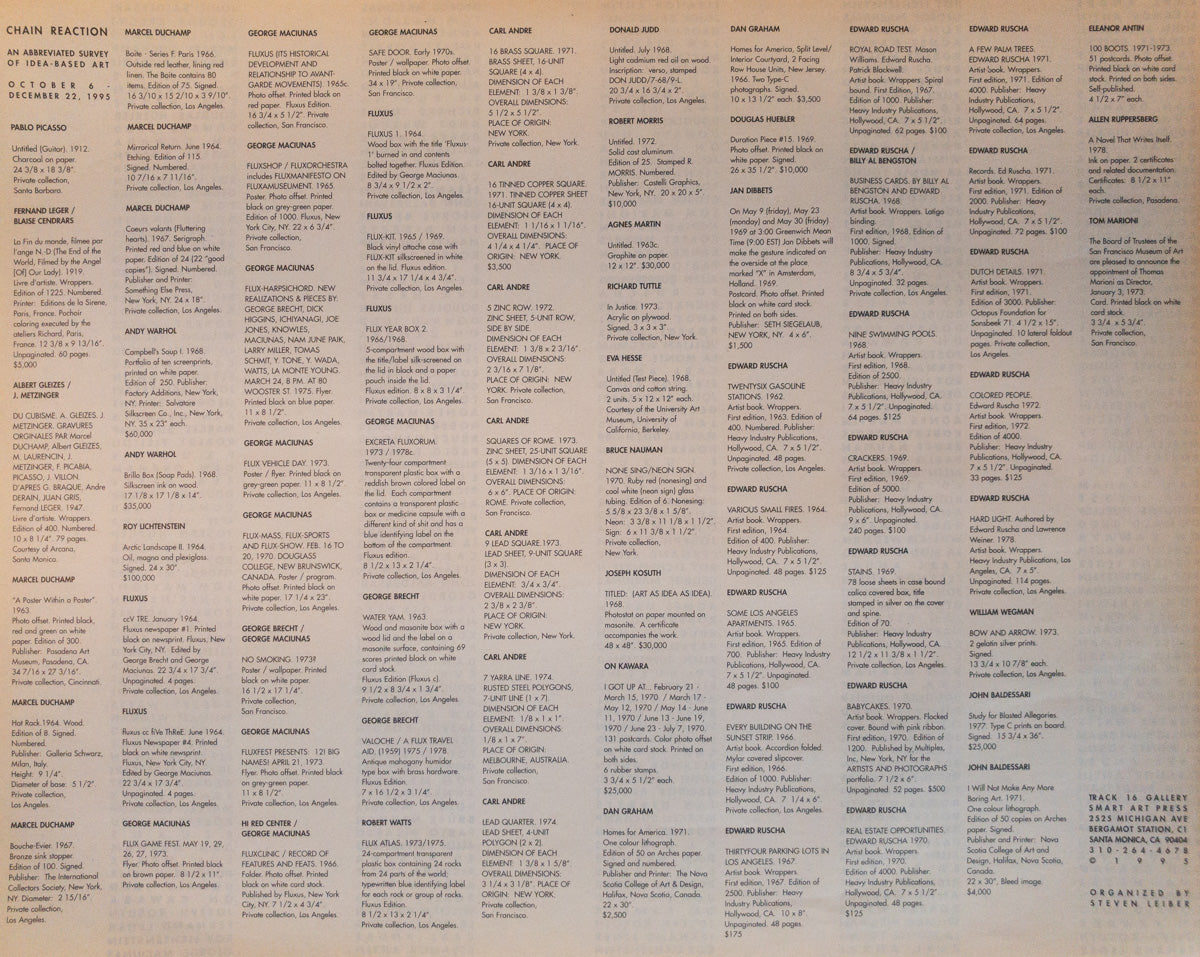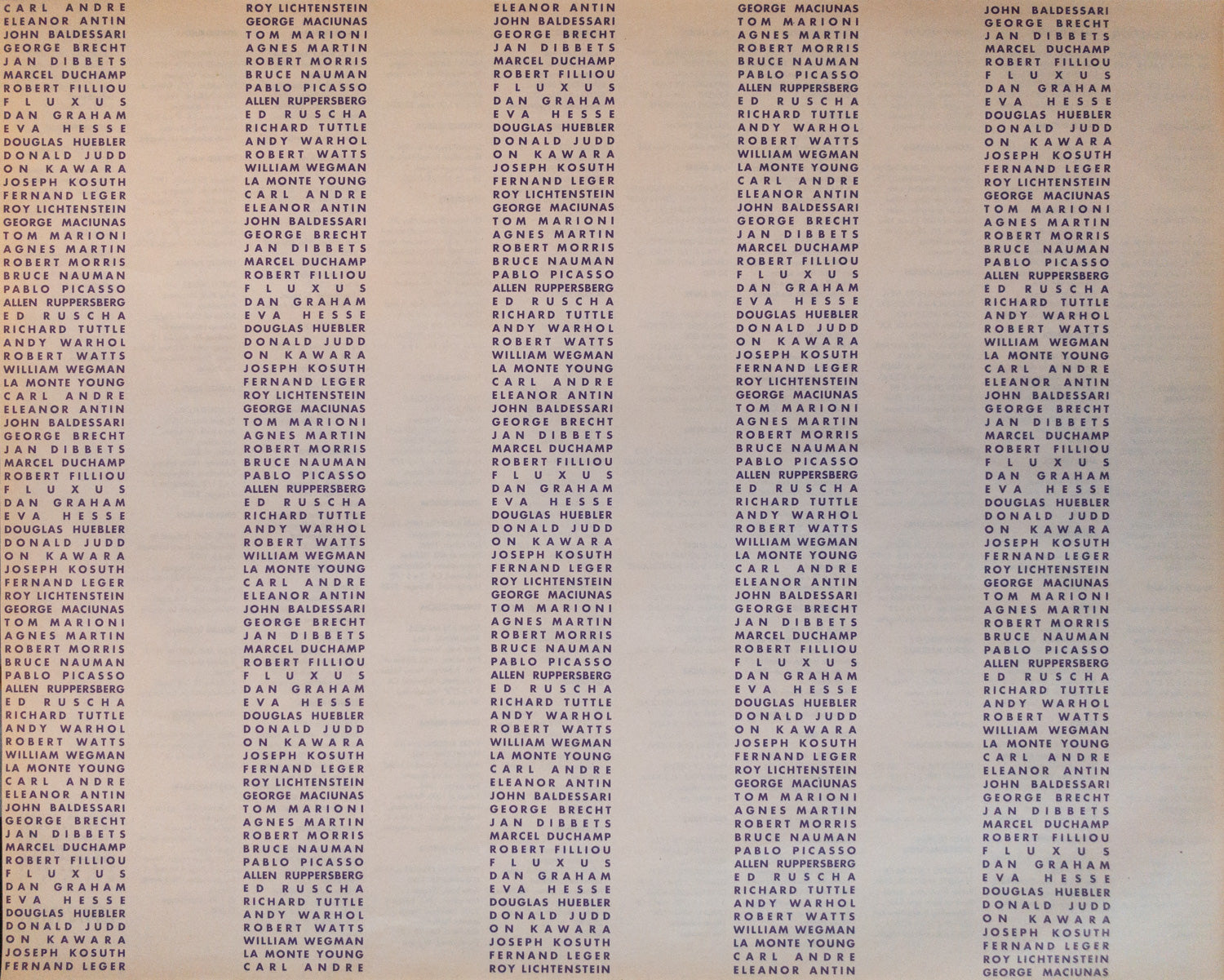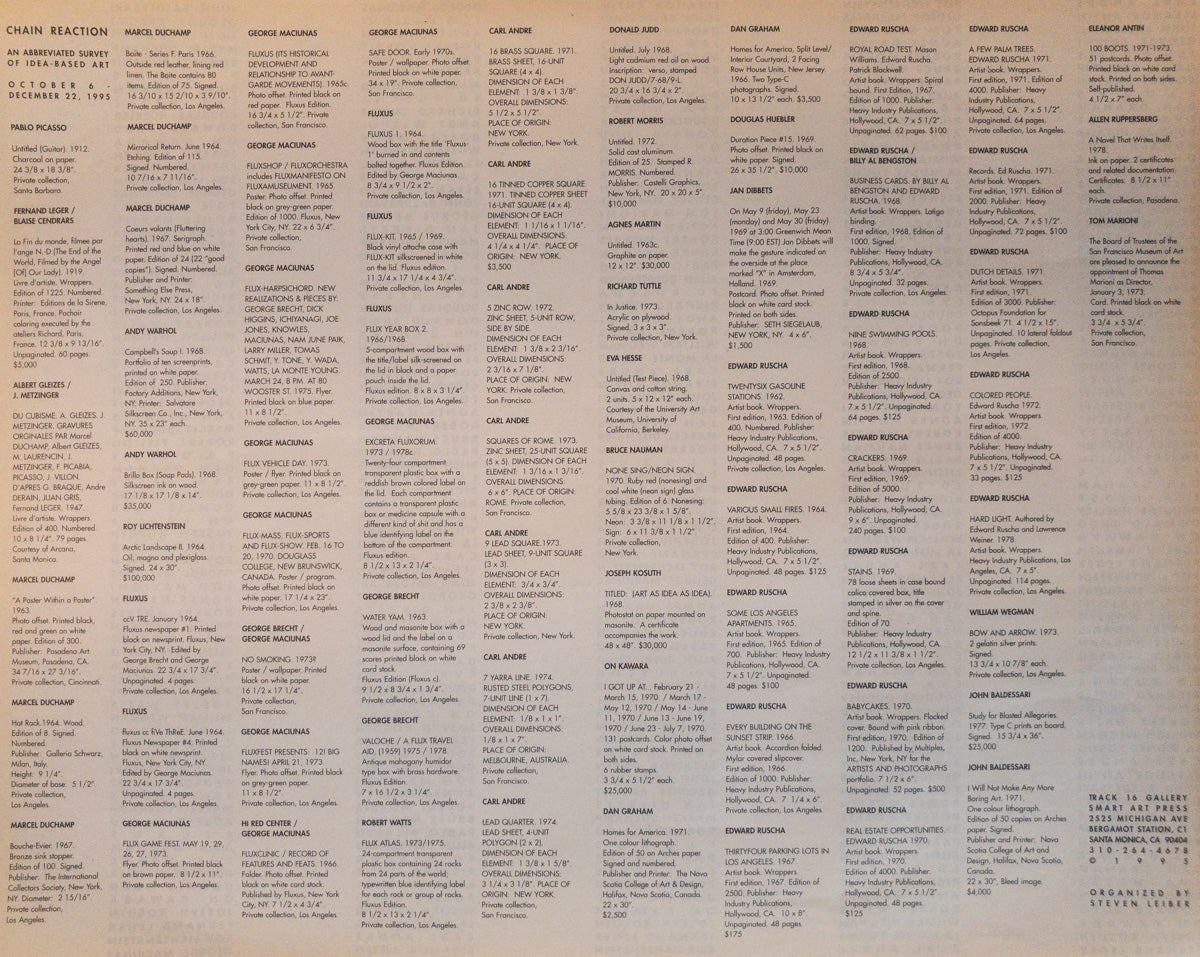Track 16 Gallery
Chain Reaction Exhibition Checklist - Curated by Steven Leiber
Chain Reaction Exhibition Checklist - Curated by Steven Leiber
Couldn't load pickup availability
16 x 20 inches (unfolded)
Double Sided
Double folded.
1995
Curated By Steven Leiber
October 6, 1995 - December 22, 1995
Chain Reaction is an exhibit that examines the line of descent beginning with Picasso's Cubist experiments in the 1920s and extends through tangential branches of 20th century art to the advent of California idea-based art of the 1960s and 70s. Following a path of vanguard thinkers, Chain Reaction begins with works by Pablo Picasso and Marcel Duchamp. On view will be Cubist prints by Picasso and a range of works by Duchamp including a Boite en Valise, Coeur Volant and A Poster Within a Poster (Duchamp's "Wanted" poster from the Pasadena Museum of Art's retrospective of 1963). How Pop Art is descended from Duchamp's opening up the subject of art to include the notion of the "readymade" can be viewed in works by Andy Warhol and others who fully explored the worlds of popular culture, mass media and consumerism in paintings and sculpture.
Contemporaneous with Pop Art, but perhaps more radical in its experimental approach to art making processes, the Fluxus movement is represented in Chain Reaction with numerous works illustrating the mulitfarious anti-art practices of an eclectic group of artists, poets and musicians including George Maciunas, Yoko Ono, Nam June Paik, LaMonte Young, George Brecht, Robert Filliou, Robert Watts and many others. Included in the exhibition will be the famous compilations of Fluxus work: Fluxus 1 (1964), Flux Kit (1964-69), and Flux Year Box 2 (1966-77); Robert Watts' Flux Atlas, and ultra-instigator George Maciunas' hilarious Excreta Fluxorum, as well as numerous other works.
In contrast with the effervescent developments of Pop and Fluxus, Minimalism's pared down sculptural simplicity, standardized shapes and sizes, repetition, and perceptual gestalt can also be seen to be integrally involved with conceptual processes, especially the act of creating or making. Represented in the exhibition as works from the 70s by Carl Andre, Keith Sonnier, and Donald Judd, as well as the anti-form efforts of the post-miniamlists exemplified by Eve Hesse's Test Pieces on loan from the University Art Museum of the University of California, Berkeley and the ephemeral In Justice by Richard Tuttle.
The late 60s and 70s also saw a flourishing of Conceptual artists who explored the full range of media -- performance, video, photography, language and various combinations of media -- to affect a serendipitous transformation of the relationship between the viewer and the work of art. Included is a work from Joseph Kosuth's series Titled: (ART AS IDEA AS IDEA), a diptych from Dan Graham's Homes of America series, Douglas Huebler's Duration Piece #15, and over 100 postcards by On Kawara, among others.
Chain Reaction ends with highlights of the wry, often satirical work which has come to characterize California idea art of the 1960s and 70s. Perhaps the quintessential conceptual practitioner of the period is Ed Ruscha, whose books, starting with Twenty-Six Gasoline Stations (1962) and encompassing such legendary tomes as Royal Road Test, Every Building on the Sunset Strip, Business Cards (in collaboration with Billy Al Bengston), Crackers, and Colored People demonstrate the vitality and humor of the mundane. Also on view will be Eleanor Antin's mail art project One Hundred Boots, works by John Baldessari including I Will Make No More Boring Art, and a early diptych by William Wegman entitled Bow and Arrow, Arrow and Bow.
Chain Reaction complements and expands upon the Los Angeles Museum of Contemporary Art's Reconsidering the Object of Art and pays tribute to the fertile period of time in the 60s and 70s in which art and artists re-fashioned materials, taste and ideas to produce wildly creative art-making strategies.




